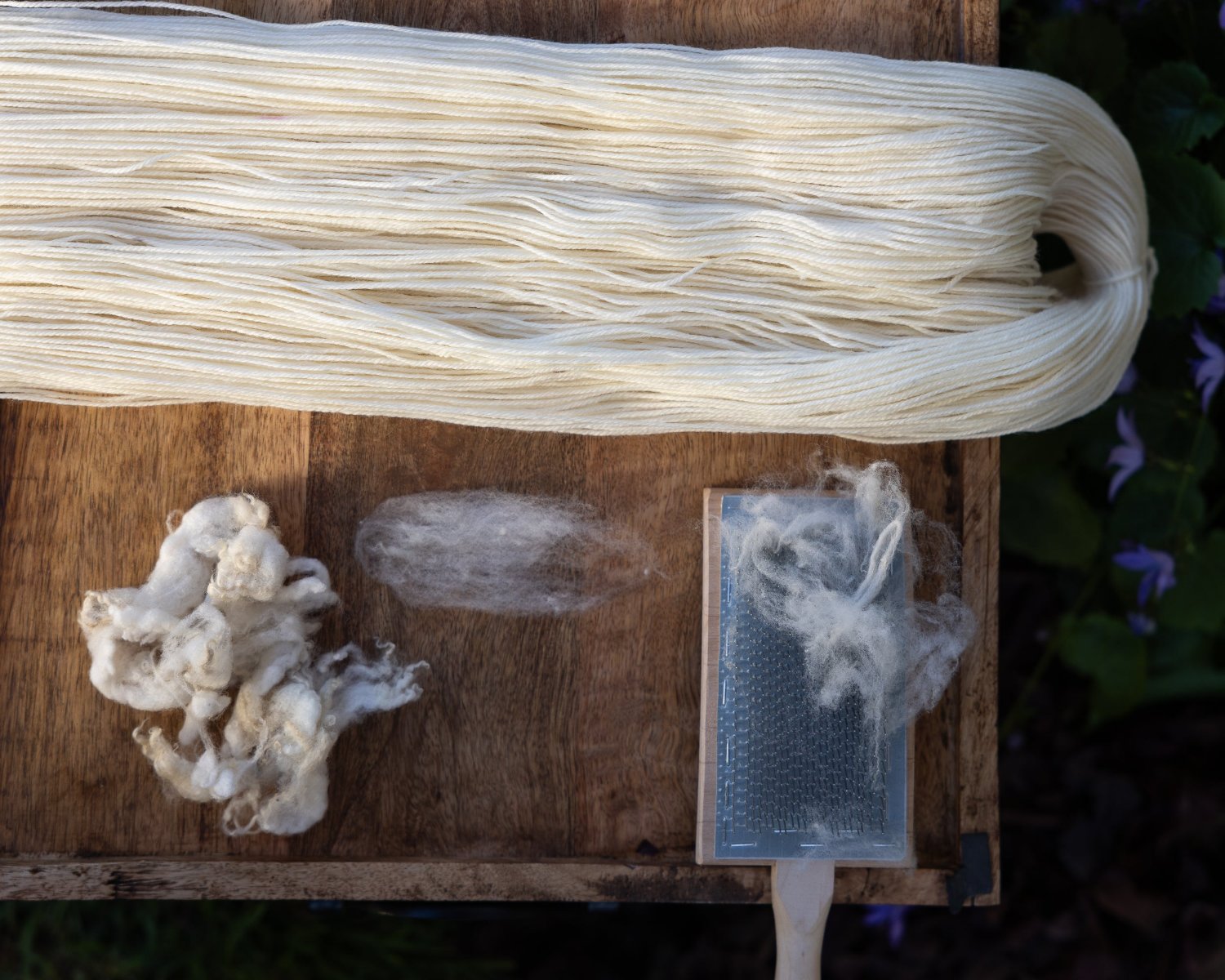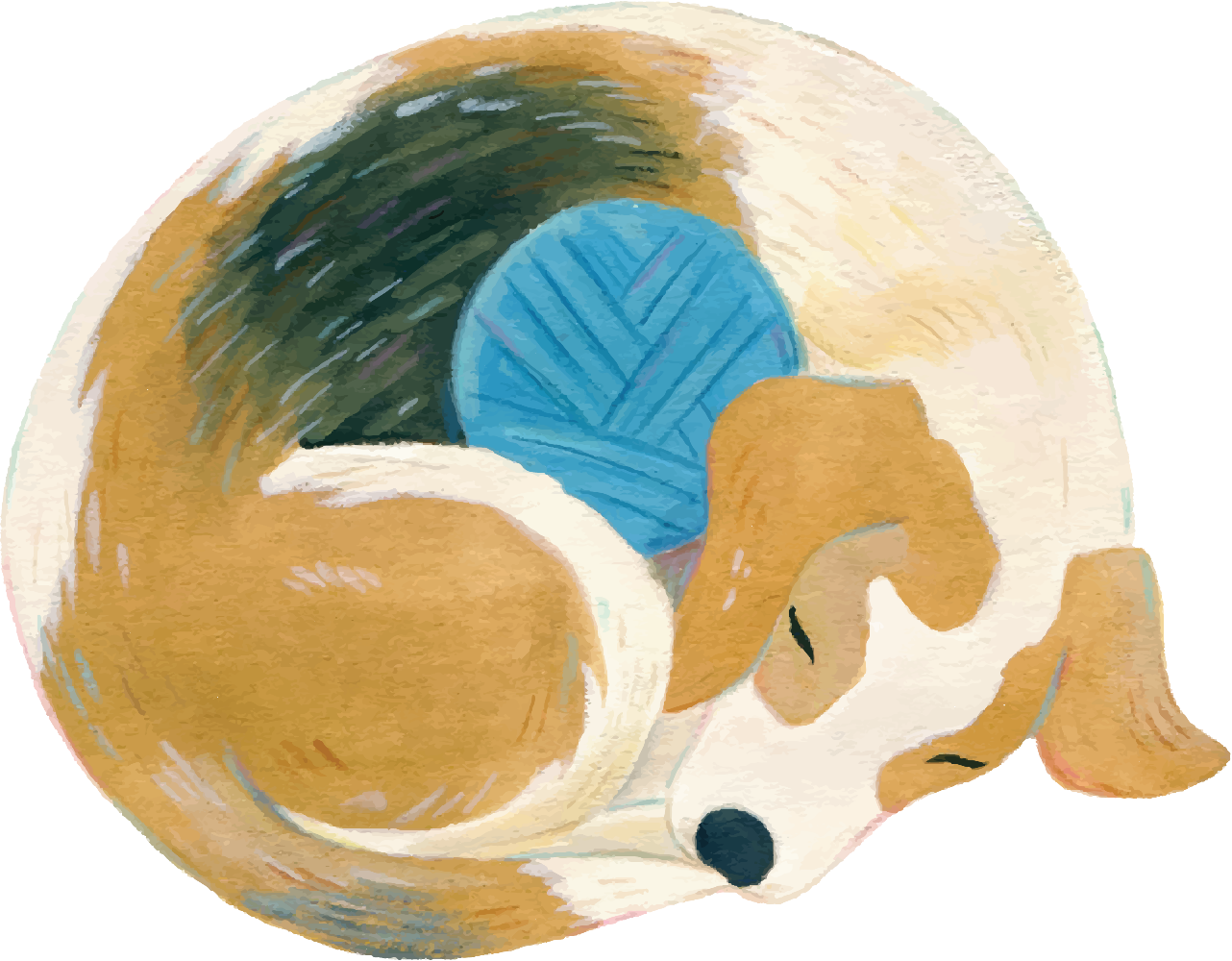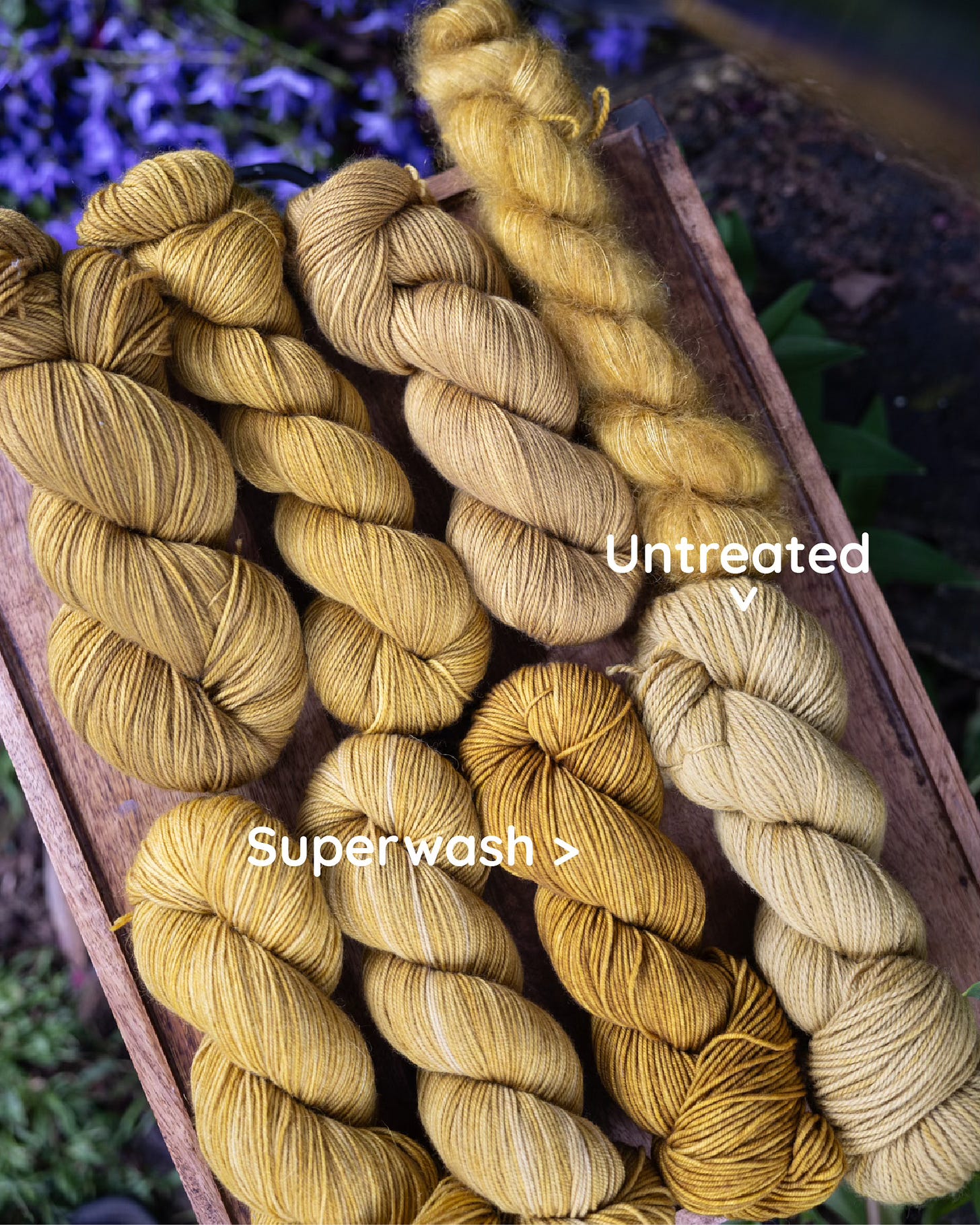shop
knitting-help
about-me

The truth about superwashed wool yarn
The conventional discourse about superwash yarn is that it is, to be blunt, absolutely, positively bad for the environment.
It’s been called “coated in plastic.”
The process of superwashing yarn is widely believed to release harmful chemicals into the environment.
It’s been suggested that superwashed wool contributes to microplastics in our oceans.
Indeed, one of my top search results for “superwash wool and environmental impacts” is a blog that strongly asserts all of these claims, accompanied by Pinterest-friendly graphics.
Because these points are contrary to what most knitters value, let’s dive into the research, find out what’s true and what’s not, and consider how we can make our own best choices about which yarn(s) to use.
How the superwash process works
Knitter and designer Miriam Felton, in her Yarn Stories podcast, offers an excellent explanation for why we might want to superwash wool in the first place. She says, “Wool is a lot like human hair. It’s made of protein. In the case of sheep, the strand of wool has scales on it. When wool gets hot, the scales open up. When you add friction, the scales interlock. In a garment, and especially when washing that garment, this causes shrinking—or felting.”
Superwashing is the process of making wool resistant to shrinking.
Using shrink-resistant wool is particularly helpful when making garments for babies or children, whose garments are washed more frequently and whose parents may not have time to handwash them. It’s helpful for people who may have mobility needs that require them to use machine washers or dryers, rather than hand-washing and laying things flat to dry. It can also be helpful for certain garments, such as socks, that require frequent washing.
According to wool expert Clara Parkes, “There is no single, universally-practiced process for shrink-proofing wool. But the current standard is a chlorine-polymer shrink-resist system called the ‘chlorine-Hercosett’ process.”
The mention of chlorine, here, indicates that chlorinated water is used in the process. Hercosett is a brand name for a polymer that helps increase the “wet strength” of pulp substances. Hercosett is employed in many other manufacturing processes for items that need to keep their shape when wet, such as paper towels.
In the case of wool, the superwashing process involves using a caustic chlorine substance to erode the tips of the wool scales. Then, a second process fills the gaps created between the scales with Hercosett, a nylon-based polymer. Superwashing wool means both removing scales and microscopically coating part of the yarn (not the entire strand).
Let’s look at the environmental concerns involved with the chlorine-Hercosett process:
What’s the impact on our environment?
The answer mostly depends on where your yarn is superwashed.
The primary environmental concern with the chlorine-Hercosett process is that both steps (descaling and coating) generate wastewater containing AOX (adsorbable organic halides). AOX is toxic. Therefore, in developed countries, the industrial use of the chlorine-Hercosett process is restricted. There are limits on AOX discharge, and various requirements to prevent it from entering water systems used by humans or animals.
If superwashing occurs in a geographic locale with fewer regulations, and if AOX is released into water systems, then, yes, it’s quite harmful to the environment. If it occurs in areas with stricter regulations, then the risk of environmental impact is much lower.
What most folks don’t realize is that the hazards are in the byproduct of the superwashing process. The Hercosett resin itself is described as non-toxic.
In addition, we usually associate chlorine with danger. However, just enough chlorine is used in the chlorine-Hercosett process so that nearly all of it is consumed during the descaling process. The amount of chlorine used is about the same as what you’d find in a swimming pool.
Where is your yarn superwashed?
There are superwashing facilities in Europe, the Americas, and Asia, all of which are located in specific countries with varying levels of environmental regulations.
Almost all of the superwash wool I dye is superwashed at the same facility in the United States. In fact, there is only one place in the entire U.S. that still superwashes wool: Chargeurs in South Carolina.
Chargeurs has put in place what I consider to be significant environmental safeguards:
-
It has its own wastewater treatment plant, which means it is not connected to the larger water system.
-
They use a water-based, not gas-based, superwashing process, which ensures no gas is produced or released into the environment. The process’s toxic byproduct, AOX, is contained in the wastewater.
-
The system produces a mono-chlorinated AOX that can be broken down and degraded.
-
They test the incoming and outgoing water at the wastewater treatment facility and are regulated by the EPA.
Superwashing processes with even lower environmental risks and requiring less water reclamation are currently being developed; however, they are still in the early stages of scientific research and are not yet viable on a large scale.
Interestingly, a recent study on superwashed wool inquired whether it sheds microplastics (which can then contaminate our water supply) during washing. The answer was a clear ‘no.’ In fact, superwashed wool breaks down and decomposes three times faster than untreated wool, and it does not shed microplastics.
How much non-renewable petroleum product is required for superwashing yarn?
Eight percent of all global oil production is used to make plastic products, including synthetic garments and textiles. Many yarn crafters I know are trying to reduce their own contributions to this number—for example, we might avoid single-use plastic items in our daily lives.
The idea of choosing a wool yarn that also requires some amount of non-renewable petroleum in its manufacturing process just doesn’t sit well with many of us.
I couldn't determine how much petroleum is needed to produce the Hercosett used in superwashing wool, but I did find out that Hercosett is primarily used in the paper and pulp industry for products such as paper towels, toilet paper, diapers, tea bags, or coffee filters.
I suspect that my own household unknowingly consumes more Hercosett in a day than what is needed for a single skein of yarn.
What does this mean for the average knitter, crocheter, or yarn crafter?
For many people, the presence of shrink-resistance encourages us to use and wear more wool, which is a remarkable fiber.
Wool is exceptionally warm, resilient, elastic, fire-retardant, quick-drying, and anti-static. It is 100 percent biodegradable. Overall, it outperforms any synthetic substitute.
Wool is also regenerative—which means that we could use all the wool from every sheep on planet Earth, and the next year, these sheep would simply grow more. A sustainable process ensures that the creation of a commodity doesn’t harm our environment. A regenerative process goes a step further by rebuilding systems or restoring nature while producing a commodity. Wool exemplifies the best of both approaches.
The U.S. military isn't typically where you’d expect to find sustainable, environmentally friendly practices, but when it comes to wool, the military has played a significant positive role in the yarn-crafting industry.
The U.S. military buys 20 percent of the American wool clip each year. This quite literally keeps American sheep farmers in business.
Why does the military buy (and use) so much American wool? Not only does wool outperform other textiles, but two U.S. laws—known as the Berry and Kissell Amendments—require that certain products purchased by the Department of Defense be manufactured and wholly produced within the United States. The Berry Amendment was first introduced in 1941 and became a permanent law in 2002.
The U.S. military also invested in Chargeurs to build its current superwashing plant on American soil. Decades ago, Chargeurs had a superwashing plant as part of their operations but closed it in 1998 because of the business climate and as the impacts of the North American Free Trade Agreement of 1994 began to result in the offshoring of American textiles. Sadly, the American textile industry has now been nearly entirely offshored to countries with weaker environmental and labor protections. “Offshoring has left our textile manufacturing infrastructure in an extraordinarily fragile place,” writes wool expert Clara Parkes. The existence of a US-based superwashing facility helps strengthen and protect the entire American textile supply chain. Indeed, Chargeurs remains the last and now only processor of superwashed wool top in the United States.
Yarn crafters everywhere should appreciate the essential contribution of sound public policy like the Berry Amendment to our everyday lives and environment.
Notes: If you’re interested in reading more about American textile manufacturing, here’s an interesting gift article from the New York Times about an Italian entrepreneur trying to revive a New England textile mill.)
And, here are my sources for this piece in a downloadable PDF.
Things I like to think about when choosing a yarn
I prefer wool yarns to nearly every other natural fiber. I also believe superwashed wool yarn adds a net positive to our industry, and I believe there’s a place for both superwashed and untreated wool in everyone’s yarn stashes.
I use both types of wool in my wardrobe, depending on what I’m making, how intensely I want the item to be colored, how I plan to wash it, and how it feels when knitting with it.
In addition to being shrink-resistant, superwashed wool can be dyed brighter and more deeply than untreated wool. The descaling process allows dye particles to penetrate the wool shaft more thoroughly and helps dye specks adhere more precisely. These are all aesthetic effects that I love and want to incorporate into my garment-making from time to time.
A dye colleague in the Fiber Business Collective explains the benefits of superwash wool in this way:
Superwash yarn is softer and smoother than natural wool with added shine and drape, but a consequence of the superwash process means that the fibers lose some of their elasticity and memory.
Another benefit of superwash yarn is the yarn’s ability to take dye exceptionally well. Hello gorgeous vibrant speckles and stunningly bold tonals!
Superwash yarns require less heat and water compared to dyeing standard wool and since they are more resistant to quick temperature changes, the dyeing process is much faster and uses significantly less heat time and electricity. This results in a dye process that demands much less of our precious fossil fuel resources helping to offset the environmental impact of the superwashing process.—Megan Granger, Megs & Co.
In contrast, untreated wool has a hazier, more matte quality. It retains all of its natural elasticity, so that it looks and feels extra cozy and squishy. These are aesthetic effects I also love and want to incorporate into my garment-making from time to time.
Here’s a visual comparison of my own dye work on both superwash and untreated wool, in my Foxtail colorway:
I’ve taken the time to learn where all the components of my yarn come from and where my yarns are processed, and this information is on my shop website. I’ll also soon be adding my first untreated fingering-weight wool to my lineup, coming in the fall.
Tell me …
What are your thoughts on superwash yarn? What’s in your stash? Did you learn something that surprised you? Tell me!
If you’re curious to learn more, download a PDF with all of my sources and use these links as a jumping off point for your own research.






